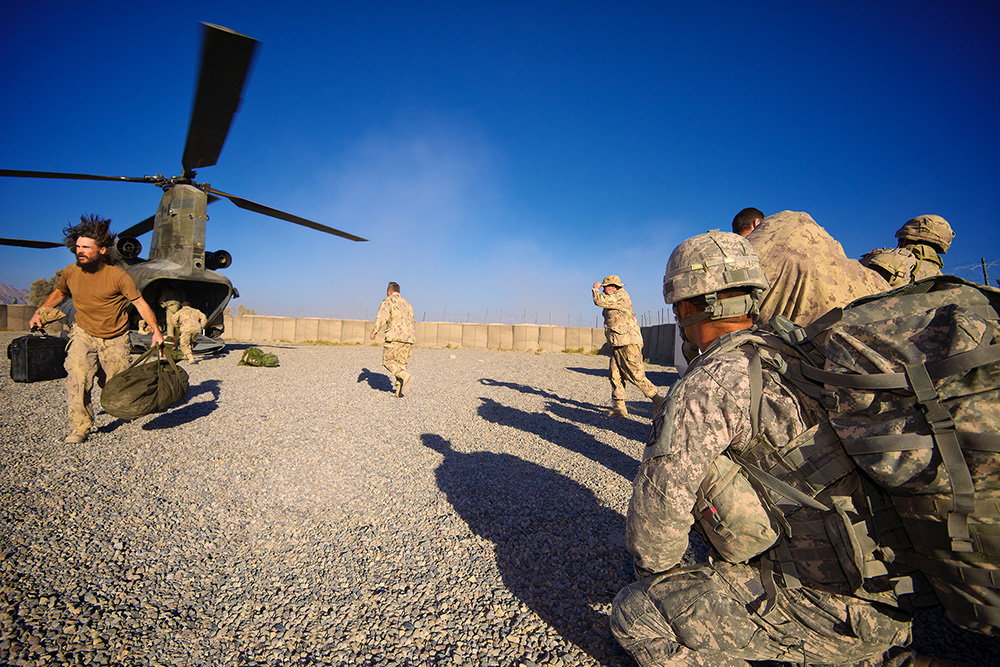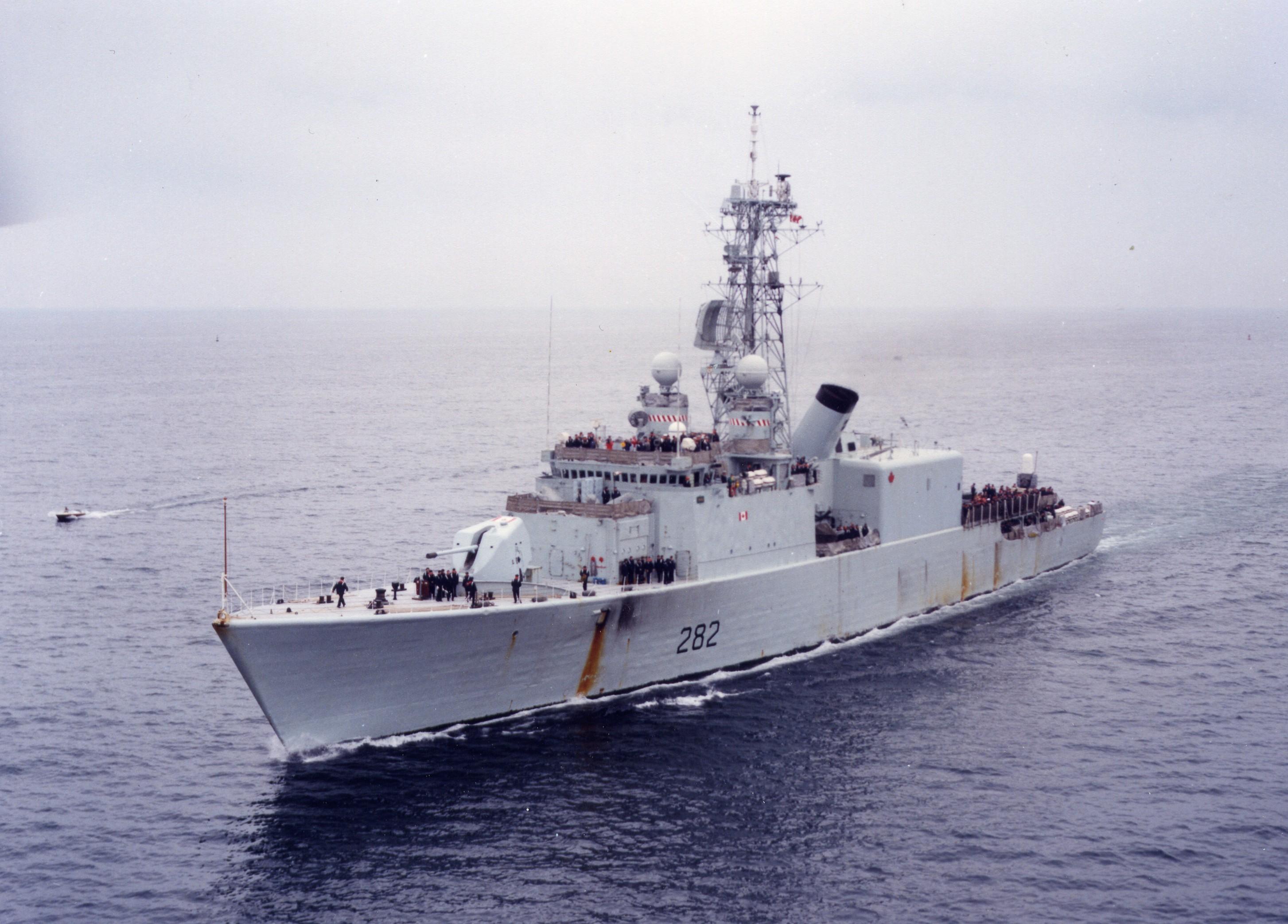The Iraq War (2003–11) was fought against Iraq by a coalition of 46 countries led by the United States and the United Kingdom. The decision to go to war was based in part on faulty intelligence and assumptions about the Iraqi manufacture and storage of weapons of mass destruction (WMD). The war was conducted in two phases, a brief conventional one in March and April 2003 and a much longer counterinsurgency operation, which ended in December 2011. Despite American and British pressure, Canadian Prime Minister Jean Chrétien refused to publicly support the war. Ostensibly, this was because there was no United Nations (UN) Security Council resolution authorizing the operation, although several other factors were involved.

Background: Gulf War (1990–91)
In August 1990, Iraqi forces invaded neighbouring Kuwait. Shortly after, the UN passed a resolution condemning Iraq and authorized the use of force to compel Iraq’s withdrawal. It also imposed economic sanctions against Iraq.
In the following conflict, code-named Operation Desert Storm, coalition forces, including Canada, soundly defeated Iraqi forces. (See Persian Gulf War, 1990–91.) Despite their loss, Iraqi President Saddam Hussein was allowed to remain in power. Among the peace terms were the disposal of all weapons of mass destruction (WMD) in Iraq, whether nuclear, biological or chemical. (See also Canada and Weapons of Mass Destruction.)
Iraqi Weapons of Mass Destruction
After the Gulf War, the UN assigned inspectors to confirm that existing WMD were destroyed, that no more were produced and that WMD research was halted. Failure to comply would result in the continuation of economic sanctions.
Inspectors were members of either the UN Special Commission (UNSCOM) for chemical and biological weapons or the International Atomic Energy Agency (IAEA) for nuclear weapons. Canadian specialists were members of both groups. From the beginning, Iraq attempted to obstruct the inspectors. Documents were fabricated, and WMD programs continued to operate in secret.
In December 1998, the inspection agencies removed their personnel after the Iraqis stopped cooperating with them. Shortly after, American and British forces conducted four days of aircraft and cruise missile attacks against Iraqi facilities under the codename Operation Desert Fox. After the bombing, Iraq still refused to let UN inspectors return.
The Threat
In 2002, US President George W. Bush announced that Iraq remained a threat to the US, and disarming Iraq was an American priority. His argument was based on three main points: the vulnerability of his country following the terrorist attacks of 11 September 2001, Iraq’s alleged continuation of its WMD program and its support for terrorists, which included Al-Qaeda, the organization behind the 9/11 attacks.
On 8 November 2002, the UN Security Council passed a resolution demanding Iraq allow inspectors into the country again. Although Iraq initially seemed to comply with the UN’s direction, in early 2003 President Bush and British Prime Minister Tony Blair announced Iraq continued to obstruct inspectors and possess prohibited weapons.
The two leaders attempted to obtain a UN resolution authorizing the use of force against Iraq due to its noncompliance with UN directions. On 5 February, US Secretary of State Colin Powell gave a presentation to the UN Security Council in which he claimed to have “solid sources” to back up statements about the existence of Iraqi WMD. Powell’s speech, however, was largely discredited, and the UN refused to approve a resolution against Iraq.

Canadian Decision
On 16 March 2003, President George W. Bush gave the UN Security Council 24 hours to approve the resolution authorizing an invasion. When it became clear the resolution would not pass, the US withdrew it. That afternoon, after deliberating and consulting with his key advisers, Canadian Prime Minister Jean Chrétien announced Canada would not participate in an American-led war without UN approval.
Bush decided to attack Iraq regardless. On 19 March, an American-led coalition began to bomb Iraq, followed a day later by a ground invasion. Operation Iraqi Freedom moved swiftly. The Iraqi capital of Baghdad was captured on 9 April, and Bush declared “mission accomplished” on 1 May.
Many Canadians were concerned about Chrétien’s decision. Some feared it would further marginalize the country’s role in foreign affairs, while others believed it would affect economic ties with the US. In the end, however, Canada’s lack of involvement did not affect the economy.
Some have argued Chrétien’s decision was based on the lack of UN Security Council approval; others, however, have pointed out the prime minister approved Canadian participation in other multinational military operations without such support. These included the 1999 bombing campaign in Kosovo and Bosnia (see Canadian Peacekeepers in the Balkans) and the 2001 invasion of Afghanistan.
In fact, Chrétien’s decision was based on many factors. He believed the war was unnecessary because Iraq had been considerably weakened after the Gulf War and was not an imminent threat to the US. The prime minister also felt any conflict would be counterproductive in the larger war against terrorism and in preserving stability in the Middle East.
Additionally, Chrétien did not believe Iraq would transfer WMD to Al-Qaeda given the hostility between the two based on their opposing concepts of government. With such weapons, terrorists might use them against Iraq.
Some have suggested Chrétien’s decision was based on domestic politics. Except for Alberta, public opinion was solidly against Canadian participation in the war, with only 10 per cent supporting military intervention without UN authorization. The government, however, never claimed its decision was based on public pressure.

Canadian Involvement
Although President George W. Bush and other Americans pressured Canada to support the war, at no time did US defence officials ask Canada to provide troops. Yet Canada did support the invasion indirectly. In fact, some sources claim that Canada’s military support exceeded that of most coalition members.
Canadian ships were already in the region to support the invasion of Afghanistan. Although the Canadian navy was instructed not to assist American operations against Iraq, it was often difficult to distinguish whether an interdiction mission undertaken by RCN warships, including their embarked RCAF helicopters and crews, was in support of the war in Iraq or Afghanistan. (Interdiction missions aim to destroy, delay or disrupt enemy forces or supplies before they reach a combat zone.) No Canadian fighter aircraft were involved, but Canadian aircrew flew on surveillance missions that directed US attack aircraft over Iraq. Moreover, approximately 100 Canadian exchange officers assigned to American, British and Australian forces were allowed to remain with their units. This included Brigadier-General Walt Natynczyk (later general and chief of the defence staff), who helped plan the invasion of Iraq.
Some Canadian companies also benefitted from the war, from providing ammunition (SNC Technologies Inc.) to rebuilding wireless networks (Nortel).

 Share on Facebook
Share on Facebook Share on X
Share on X Share by Email
Share by Email Share on Google Classroom
Share on Google Classroom


